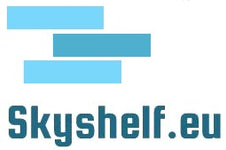
American monoplanes with the RAF (1942) (original paper edition)
American Monoplanes with the RAF - Aircraft identification (Part IV) 1942
By Peter G. Masefield, M.A., A.F.R.Ae.S.
Technical Editor of THE AEROPLANE and Editor of THE AEROPLANE SPOTTER.
By the autumn of 1942, several thousands military aeroplanes of American design and construction were in service with the British Air Forces —the Royal Air Force, the Fleet Air Arm and the Air Forces of the British Commonwealth of Nations. Thirty-two of the chief types of United States monoplanes in British service are described and illustrated in this book. Taken in general, "American aeroplanes" were superlative flying Machines, but some types were considered less good as fighting machines. Nevertheless, four military categories of American aircraft were commended withbut reservation as the Best in World those days. The North American Mitchell was probably the World's best all-round medium bomber—fast and heavily armed. The Consolidated Coronado was the best patrol-bomber flying-boat. The Grumman Avenger single-motor torpedo-bomber was a long way the most outstanding carrier-borne aeroplane of its type and the Douglas C-54 (DC-4) tactical transport was the most useful machine of its class in service.
Several other types may be singled out for special mention. The Consolidated Catalina flying-boat, the Douglas Boston III day bomber, the Douglas Havoc II night fighter, the Lockheed Hudson III patrol bomber and the North American Mustang scout. All have given excellent service on their specialised operational duties. Other types which, at the time of writing, were awaited with the greatest interest and the highest expectations are the Martin Marauder day bomber and the Republic Thunderbolt fighter.
The author considers that American single-seat fighters have, on the whole, proved disappointing chiefly because of the low-supercharge of their motors which renders their performance poor at height. Nor have they been adequately armed and armoured. However, once that the Packard-Rolls-Royce Merlin motor achieved quantity production in the U.S.A., he tought a great improvement should result. The older types are considered useful for low offensive work—flying as fighter-bombers in the Middle East and as fighting scouts with the R.A.F. Army Co-operation Command.
Interesting to note that the author considers the American heavy bombers fall short of their British counterparts by reason of their rather light bomb loads — a maximum of 5,000 lb. for the Fortress and 6,000 lb.for the Liberator. The new big Boeing B-29s and Consolidated B-32s -should remedy these
defects. Meanwhile the American " heavies" will do invaluable work over that vital life-line, the Atlantic; and for shorter-range escorted day attacks their armament of 0.5-in. machine-guns has proved effective in action.
Meanwhile large numbers of aircraft of the U.S. Army and the U.S. Navy are being based in Great Britain. And so Airacobras, Fortresses, Coronados, Liberators, Kittyhawks, Bostons, Dakotas, Martlets, Lightnings, Marauders, Mariners, Mitchells, Mustangs, Thunderbolts and Vengeances, flown by American as well as by British crews, will become ever more common sights to their friends in the British Isles and to their enemies on the Continent.
71 pages - in English
weared and tanned
message me for cheaper postage












